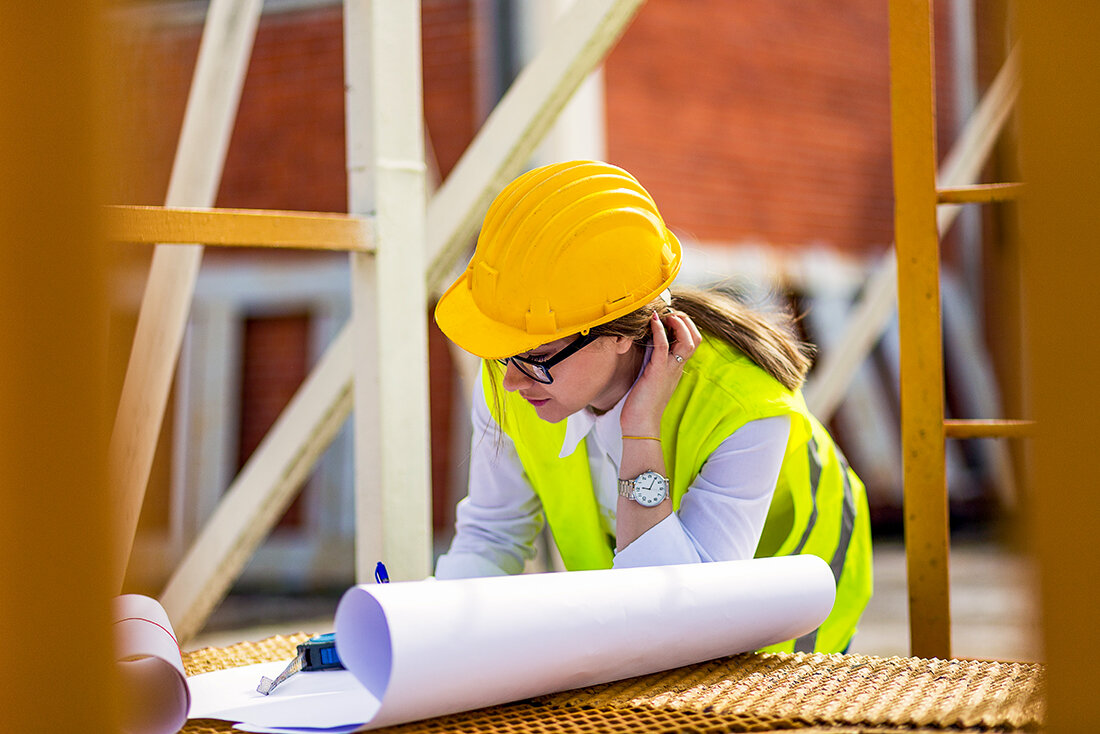
There is no better time for women to consider a career in construction.
Working women in the United States hit a remarkable milestone 12 months ago. For the first time, women held more nonfarm payroll jobs than men. Then, the COVID-19 pandemic cost five million women their jobs. In December 2020 alone, the U.S. economy lost 140,000 jobs—all of them previously held by women. This brought women’s labor force participation rate down to 57%, the lowest since 1988.
Fast forward one year and the construction industry is well on the way to a strong comeback from the savage recession unleashed by COVID-19, having already recovered three-quarters of the jobs lost in 2020. With vaccinations underway and increased optimism about prospects for construction in 2021, there is no better time for women to consider construction as a practical career choice.
For one, construction offers numerous career opportunities with competitive salaries—especially compared to other industries. While women in the U.S. workforce earn an average of 81.1% of what their male counterparts make, the gender pay gap in the construction sector is almost nonexistent, with women earning an average of 99.1% of what men earn.
Construction contractors are looking for more women to join the industry. According to the 2020 ABC Workforce Development Survey, women make up an average of 16% of management employees and 13% of the craft workforce at ABC member contractor companies. More than 40% of ABC members are actively recruiting women to the industry.
The construction industry has historically suffered from a severe worker shortage, so more jobs still need to be filled. Contractors need to hire hundreds of thousands of workers in 2021 just to keep up with the demand for construction services. For example, ABC’s Construction Backlog Indicator shows that member contractors have many months of projects in the pipeline that they have not yet begun, and according to ABC’s Construction Confidence Index, about half of these companies plan to hire more workers in the coming months. This means more job opportunities for women.
Unlike other industries, the barriers to entry for many construction professions are minimal, yet the opportunities for leadership and financial prosperity are endless. It is a career that can be entered through earn-while-you-learn apprenticeship programs without incurring student loan debt. ABC members invested $1.5 billion in 2019 to educate 1.1 million course attendees to build a construction workforce that is safe, skilled, and productive.
In addition, annual wages in the construction industry are higher than in other industries. According to the U.S. Bureau of Labor Statistics, the median annual wage for all construction occupations was $47,430 in May 2019, which was higher than the median annual wage for all occupations of $39,810. Those who work their way up to higher-level roles, such as in management, can earn an average of $100,000 a year.
In addition to competitive salaries, construction offers multiple career pathways. If you are interested in making construction job sites safer, you can become a safety technician. If you are interested in going out in the field and building with your hands, you can become a craft professional. There are also opportunities to work in construction sales, accounting, human resources, or the management track. With the right on-the-job education and dedication, construction can make career dreams come true.
There is no better time for women to consider a career in construction. Whether you are a woman starting college, reentering the workforce, joining the workforce for the first time, or looking for a second career, construction offers ample opportunities to both begin and advance in the industry that builds the places where we work, play, worship, learn and heal. Visit workforce.abc.org to learn more.

